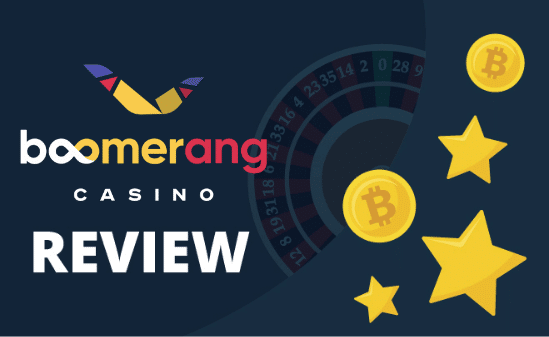Sugar Rush Volatility Guide: High Risk Vs Low Risk Gaming Explained

Imagine every turn could potentially create or destroy your entire funds. High-risk gaming brings the excitement rushing with its rare yet substantial payouts, serving to those who love living on the fringe. In contrast, low-risk games provide a steady stream of minor wins, attractive to the careful player. Understanding these factors https://thesugars.co.uk/ is essential for capitalizing on your gaming strategy and controlling emotional reactions. Ready to evaluate the risks and rewards of each approach?
Key Points
- High volatility games like Sugar Rush provide larger but infrequent wins, attracting risk-tolerant players.
- Low risk gaming ensures smaller, consistent returns, attractive to cautious players seeking steady payouts.
- Medium volatility offers a balanced risk-reward, suitable for players wanting moderate fluctuation in outcomes.
- Strategic knowledge of risk helps gamers manage funds and maximize returns.
- Consistent risk assessment and reward analysis aid in aligning gaming strategies with individual risk tolerance.
Understanding Volatility in Gaming
In the gaming world, understanding instability is crucial as it directly affects your overall interaction and tactics. Variability types define the rate and magnitude of wins and losses—elements that significantly shape your gaming habits. You’ll encounter high, medium, and low instability games, each offering distinct difficulties and rewards. High volatility promises larger wins but less common payouts, while low volatility provides smaller yet consistent gains, allowing steady progression. Medium instability strikes a balance, suiting players seeking moderate risk and reward.
Pay attention to how these variability types influence your gaming patterns. By observing these trends, you can refine your strategies, optimizing potential results. Mastering the subtleties of variability isn’t just about luck; it’s about leveraging insight to enhance your gaming skill.
The Mechanics of High-Risk Gaming
When engaging in high-risk gaming, you need to understand the intricate equilibrium between rewards and punishments, as it’s this equilibrium that defines your overall game encounter. You’ll notice that game mechanics are heavily influenced by probability and outcome dynamics, presenting a landscape where calculated risks can lead to substantial profits or significant defeats. By analyzing these elements carefully, you gain insights into how decisions impact consequences and can tailor your approaches effectively for better consequences.
Rewards and Penalties Balance
Amidst the bright chaos of high-risk gaming, understanding the balance between rewards and penalties is crucial for mastering Sugar Rush instability. You need to delve into the intricacies of reward systems and penalty frameworks. As a dedicated gamer, you’re aware that greater risks often promise larger rewards. However, they’re closely tied to penalties that can swiftly offset your gains. Analyzing the mechanics of each game’s reward system becomes essential in predicting potential outcomes. Meanwhile, clearly defining penalty frameworks helps you gauge the potential deficits you might endure. By meticulously strategizing around these elements, you can turn the volatile landscape of Sugar Rush into an opportunity for advancement. Your ability to weigh risks against rewards ultimately dictates your success in these electrifying scenarios.
Probability and Outcome Dynamics
How do you navigate the turbulent seas of high-risk gaming without getting swept away? Start by mastering probability https://en.wikipedia.org/wiki/List_of_mergers_and_acquisitions_in_online_gambling principles, your compass through uncertainty’s waves. Probability theory offers you a structured way to predict outcomes by analyzing past events and calculating potential future events. You gain insights into how likely an event is to occur, which is crucial when stakes are sky-high.
Outcome forecast becomes your map, guiding you through complicated scenarios. By comprehending potential results and associated probabilities, you make informed decisions, rather than relying on mere luck. This strategic foresight equips you to weigh risks and anticipate possible gains or losses. Focus on sharpening your ability to interpret patterns and data, ensuring you sail smoothly through the uncertainty of high-risk gaming.
Exploring Low-Risk Strategies
Even though volatility can be daunting, exploring low-risk strategies can provide a stable path through changing markets. By focusing on low risk investments, you can minimize potential losses while achieving steady returns. To effectively apply these strategies, prioritize understanding the basics of diversification. This involves spreading your investments across various asset classes to mitigate risks inherent in any single position. Bonds, dividend-paying stocks, and certain mutual funds serve as examples of such safe havens. Also, consistently reinvested dividends can further amplify your portfolio’s growth over time without exposing it to severe downturns.
Always maintain a sharp eye on https://tracxn.com/d/companies/n8-casino/__Opt3lr69bnRi_4F0whpPKpqQvPQNPyiwRxiXq0W0xjk financial indicators and fiscal policies, as these influence even the safest opportunities. By blending caution with knowledge, you stabilize your financial journey through the volatile sugar rush of market dynamics.
Risk Assessment: Weighing Your Options
As you strengthen your grasp of low-risk tactics, it’s just important to focus on risk assessment for more informed decision-making. Conducting a detailed risk analysis will arm you to discern the likely outcomes of each gaming option. The key lies in options analysis, where you weigh pros and downsides meticulously. Scrutinize each game’s parameters: volatility levels, payout formats, and historical performance. Examine how these factors align with your risk threshold. Focus on games offering reliable returns if you’re opposed to high stakes. Make a habit of reassessing your risk exposure frequently, adapting to evolving dynamics. Your goal in risk assessment is to enhance decision-making routes tailored to your strategy choices, ensuring a more balanced balance between reward possibility and risk exposure.
Reward Mechanics in High-Stakes Play
Immersing into high-risk play can be exciting, yet it needs a keen comprehension of incentive dynamics to effectively navigate the hazards. You must comprehend the high stakes dynamics that characterize this challenging gaming arena. Imagine balancing on a cliff; the rewards are significant but so are the likely losses. Acknowledging reward thresholds is vital. Set your goals with accuracy—consider not just the potential payoff, but the chance of reaching it. In high-stakes environments, rewards often reflect the fluctuation, meaning larger changes. Use previous data to forecast patterns and set realistic goals. Knowing when gains justify the risks is key. Understanding these dynamics allows you to master high-stakes play, improving your strategic approach and optimizing long-term success.
Managing Risks for Maximum Gain
To efficiently manage risks for maximum gain, you should first understand the different volatility levels, as they dictate the possible swings in outcomes. Strategic bankroll management becomes vital, ensuring you’re equipped for varying risk situations without stretching yourself. Timing your bets carefully can further optimize your returns, as recognizing the most favorable moments to engage can significantly influence overall success.
Understanding Volatility Levels
Comprehending instability levels is essential for maneuvering the unpredictable terrain of economic markets. You’re not just focusing at big or tiny price changes but analyzing various volatility types. Some holdings exhibit significant volatility, defined by rapid price changes and increased potential gains or declines. Others show low volatility, offering stability and humble returns. Recognizing volatility types lets you align your approach with risk preferences. Pay heed to risk markers—metrics like alpha, variance, and normal deviation—to gauge asset behavior. An asset’s sensitivity, for instance, shows its reactivity to market movements, leading you on potential risks. By grasping these factors, you can craft strategies that balance risk and reward efficiently, boosting gains by deliberately choosing when and how to interact with unstable markets.
Strategic Capital Management
While handling your capital, comprehending its crucial role in hazard management is important for boosting returns in unstable markets. A carefully designed strategy involves analyzing your hazard tolerance and diversifying your funds accordingly. This approach ensures you’re not investing all your eggs in one option, which is critical in dangerous environments. By distributing lesser portions of your capital across multiple opportunities, you protect against disastrous losses while taking advantage on likely upswings. Review your monetary goals and risk appetite, then adapt your strategy to suit this system. Regularly reassess your diversification tactics and modify them based on outcomes metrics and trade fluctuations. Remember, maintaining a meticulous balance between risk and reward is crucial to enhancing returns and achieving sustained success.
Timing Your Bets Wisely
When should you put your bets to equalize risk and enhance gain in volatile markets? Recognizing scheduling patterns is vital. You’ll need to watch market trends and determine optimal moments for decision. These trends, if learned, reveal when a spike or drop is approaching. Calculated pauses are also vital. Waiting calmly when uncertainty reigns can prevent rash losses. It’s about discovering the point between intuition and data, minimizing rashness.
Consider a disciplined approach where you reassess your betting tactics periodically. This encourages an atmosphere of informed judgments. Pause, examine, and only then proceed. Tracking historical data and trends will arm you with insights to forecast potential shifts. Embrace a mindset where bets are measured, not gambles, taking advantage on learned patterns for maximized gains.
Choosing the Right Strategy for You
Selecting the right approach involves matching your goals with market conditions and risk tolerance, ensuring you’re well-prepared for the unpredictable nature of sugar market volatility. Start by grasping your gaming preferences, as they dictate your method. Are you tending toward high-adrenaline, high-stakes gaming, or do you prefer the safer, slow-burn options? Assess your risk tolerance: how secure are you with potential losses in pursuit of substantial gains?
Examine current market trends, identifying patterns that align with your strategic preference. If you’re risk-averse, opt for strategies lessening exposure, focusing on gradual gains. Conversely, if you’re a thrill-seeker, daring plays with higher volatility might suit you. Always modify based on evolving market dynamics, keeping your objectives clear and your emotional responses in check.
Enhancing Your Sugar Rush Adventure
As you formulate a plan that matches with your objectives in the sweetener market, it’s essential to shift your focus toward boosting your sugar rush adventure for optimal results. The heart of improved sugar rush encounters lies in exact gameplay improvements, which can transform your strategy. Consider integrating these refined elements into your strategy:
- Customize Settings
- Leverage Analytics
- Upgrade Tools
These upgrades not only enhance your sugar rush event but also place you to execute strategies with accuracy. Mastery demands focus to detail, and these insights guide you towards improved, engaging gameplay journeys.
Frequently Asked Questions
What Factors Impact Instability in Gambling Activities Outside of Personal Authority?
You can’t manage gambling instability elements like governing policies and return rates. These factors significantly influence game elements, as tight regulations and established payout periods can decide overall risk and return levels, affecting your gaming performance.
How Does Game Development Influence Player View of Threat?
Game design’s aesthetics and prize systems shape your risk perception. Bright visuals and regular winnings can create a low-risk illusion, while scarce rewards and difficult mechanics might project a higher risk, influencing your overall gaming experience.
Are Specific Types of Players More Suited to High-Risk Gaming?
Imagine standing on a cliff’s edge, excitement pumping. Assess if high-risk gaming suits you, considering your risk tolerance. Experienced thrill-seekers might flourish, while those new should craft strategies reflecting player demographics and their experience levels.
What Are Psychological Effects of High-Stakes Gaming on Players?

High-stakes gaming engages your emotional resilience and caters to thrill-seeking behavior. It can heighten adrenaline and stress, necessitating emotional management. Strengthened self-awareness and authority are crucial to mastering the psychological impacts and achieving a balanced gaming experience.
Can Cultural Background Affect a Player’s Risk Preference in Gaming?
Under the kaleidoscope of cultural influences, your risk perception in gaming might shift like a pendulum. Your heritage whispers in your ear, mapping out comfort levels and shaping decisions in your quest for high-stakes mastery.


